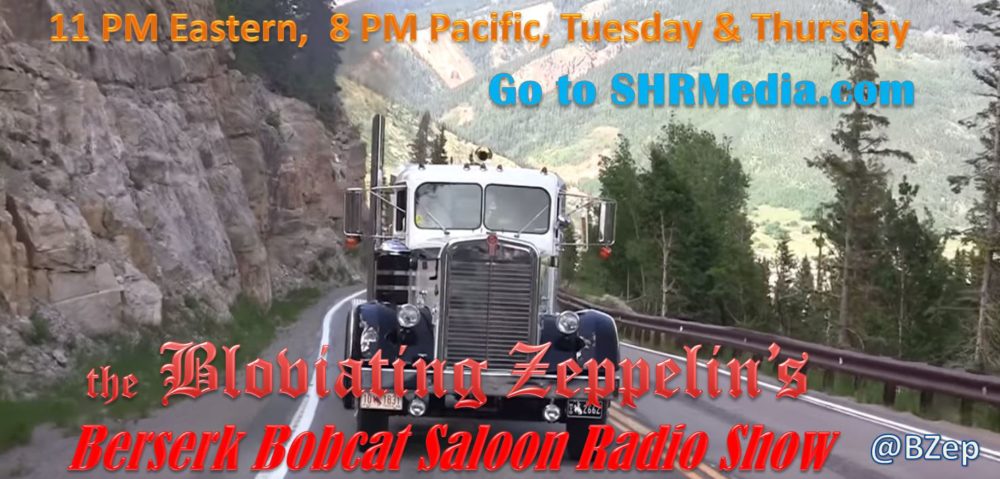Frankly: this post isn’t for you. It’s for me.

Most of my radio heroes are dead or way retired.
- -Wolfman Jack
- –Dr Donald D Rose (610, KFRC, San Francisco)
- -Carter B Smith (680, KNBR, San Francisco)
- -Mike Cleary (680, KNBR, San Francisco)
I learned, later, that in terms of “show prep” it would take Dr Don at least six hours of prior preparation per shift. And that was why he was a stellar broadcaster. He was the highest paid Bay Area broadcaster at the time. Because he worked for it. Then, it was unheard-of for broadcasters to make six figures per year. Dr Don did it.
Whilst at KFBK, 1530-AM in Sacramento in the very early 70s, I worked with:
- Ron Lyons;
- Gaylord Walker;
- Dick Garcia;
- Gil Krause;
- Tony Russell;
- Dick Francis;
- Wally Ray (one of the FIRST major black broadcasters in Sacramento)
- Harry Warren, news
- Russ Francis (engineer)
In my formative years intertwined with college, I was first hired to dispatch for Bill Black’s KFBK Traffic Eye.
Myself and another college student (and two others) were hired to dispatch not only for the traffic reports, but for the station’s critical incidents. I can recall calling officially on the air:
“KJO762 to KK6718.”
That translated minimally to “62 to 18” The call letters KJO762 belonged to McClatchy (we shared the channel with KOVR Channel 13 at the time), whilst the KK6718 was Bill Black’s airplane, where he provided traffic updates during morning and evening drive time.
Which led to my life of being able to exquisitely multi-task for the next few decades.
From there, I also worked as dispatcher, traffic radio personality, editor and programmer before the age of 20. I worked as an AM editor and as an a KFBK-FM programmer. I mostly didn’t have the first foggiest of what that meant or what I could take that advantage-of. I only knew that I drew a paycheck until it was severed.
Because, simultaneously, I was working for a few other radio stations as well as my university’s editorial staff.
My relationship with KFBK was severed on a number of levels. First, because I lacked inside political clout. Second, because I was something of a flake. was the first to be sacrificed because I was connected to no one.
But, on the other hand, I had the opportunity to do the things that I did next because of Bernie, the Security Guard (and another whom I cultivated):
– I met Morton Downey, Jr, who was the controversial talk-show host there;
– I also met Rush Limbaugh in the early 1980s, who got his first Big Show opportunity there
Simply because I could still walk into 21st & Q. And, also, directly into the “morgue” of The Sacramento Bee.
Gaylord Walker’s death by cancer in Sacramento is no longer documented on the net. He was an amazing man. I babysat his St Bernard. He would give the Sacramento freeway sprinkler report with regard to the iceplant and vegetation on the various freeways, to include 50 and 99 and 80.
Ron Lyons left KFBK and his house at “Zero Zero Plumeria,” in order to move back to the Bay Area and work for KNBR, another radio station I greatly admired at the time. Then to KCBS, where he retired in 2004 at the age of 65, having worked 49 years in radio.
My favorite Ron Lyons quote: “Sacramento is the only place where Smokey The Bear says: GO AHEAD.”
After his divorce from Lana Ray (whom he later remarried and stayed with until his passing), he stayed with me and my family for some months, whilst he drove his vomit yellow Ford Pinto. He was ever-invaluable to me by being kind enough to provide his apartment at Roach Arms on Marconi Avenue to me and my soon-to-be-wife for some frantic copulatory antic sessions.
Only much later — a few years ago — did I learn that the time I encountered Ron Lyons were some of the worst years of his life. I didn’t have his insight; I only remember that he was incredibly funny, an incredible drunk who fueled my own need for alcohol, and was as real a person as can possibly be imagined.
Ron Lyons — true name of Ronald Gryce Tomberlin — passed away in 2007
I had a place in my local Sacramento radio. I had a place. And, due to my youth, they were some of the most challenging and, yet, some of the best days of my life. Thanks, then, to WWSU, WVUD, WHIO (on the east coast), and then to KERS, KEG, KNDE, KOBO and, of course, KFBK AM and FM.
I took quite a number of photos at the time. If I can find them, or their negatives, I’ll be making some updated posts.
In many ways, because radio can be so creative (and yet so stifling and frustrating), I sometimes wish I’d stayed in radio. It stoked my creative juices. It led to the very first “two up” radio show in radio history: the KERS “Dr Fong’s Classique Radio Travesty of the Air,” with my best college friend — who later became the Best Man in my Starter Marriage.
We were the FIRST radio show to feature TWO “radio personalities” on a shift which is, now, predominantly common. We would play, on this FM station, things ranging from a parakeet training record to a combination of The Section’s “Smiling Ed” with an Elektra sound effects record of a small plane’s radio traffic whilst coming into LAX for a landing. We would eat breakfast on the air. We would play albums of Led Zeppelin in French. We would play bootlegs of Jethro Tull and the Electric Light Orchestra.
Ah.
Halcyon Radio Days.
BZ



